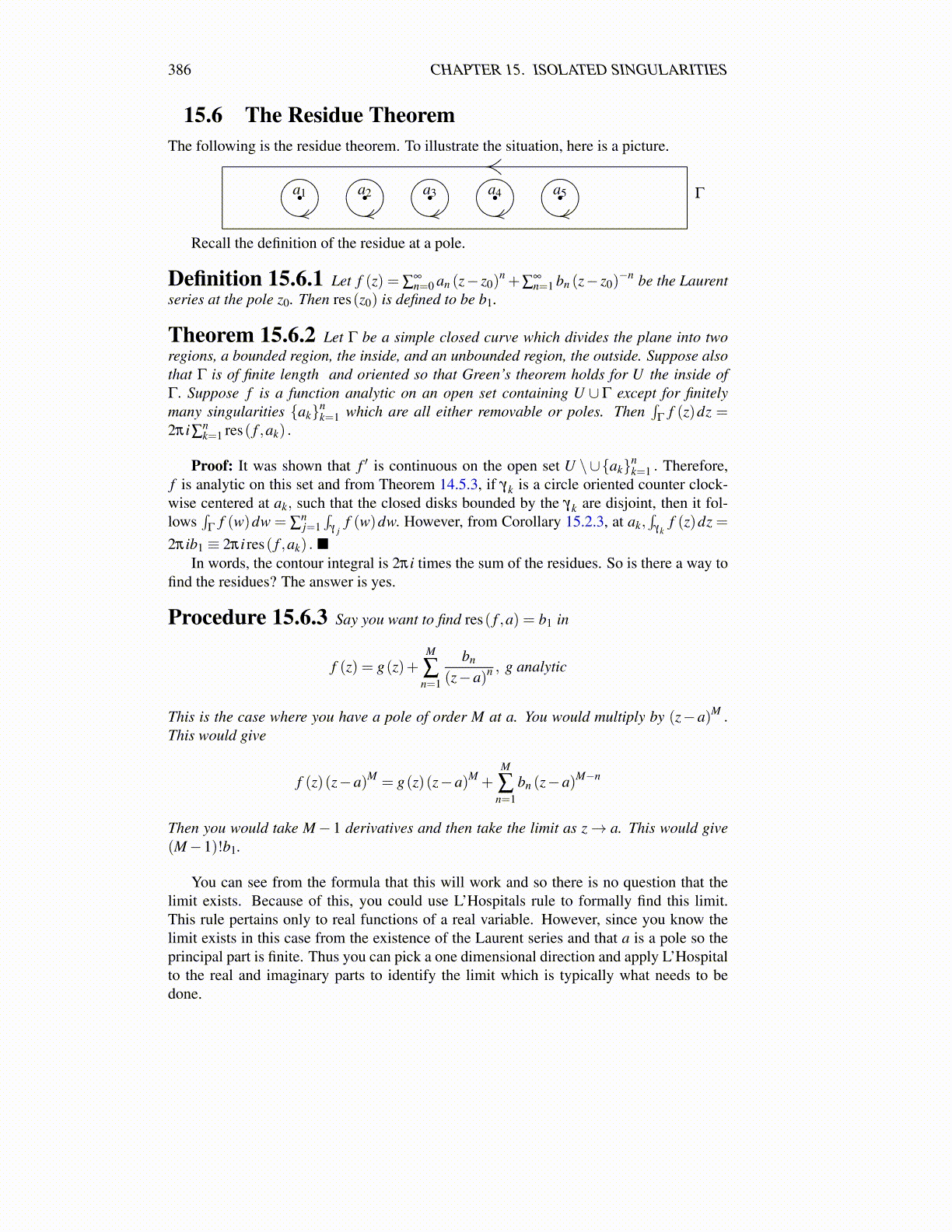
386 CHAPTER 15. ISOLATED SINGULARITIES
15.6 The Residue TheoremThe following is the residue theorem. To illustrate the situation, here is a picture.
a1 a2 a3 a4 a5 Γ
Recall the definition of the residue at a pole.
Definition 15.6.1 Let f (z) = ∑∞n=0 an (z− z0)
n +∑∞n=1 bn (z− z0)
−n be the Laurentseries at the pole z0. Then res(z0) is defined to be b1.
Theorem 15.6.2 Let Γ be a simple closed curve which divides the plane into tworegions, a bounded region, the inside, and an unbounded region, the outside. Suppose alsothat Γ is of finite length and oriented so that Green’s theorem holds for U the inside ofΓ. Suppose f is a function analytic on an open set containing U ∪ Γ except for finitelymany singularities {ak}n
k=1 which are all either removable or poles. Then∫
Γf (z)dz =
2πi∑nk=1 res( f ,ak) .
Proof: It was shown that f ′ is continuous on the open set U \∪{ak}nk=1 . Therefore,
f is analytic on this set and from Theorem 14.5.3, if γk is a circle oriented counter clock-wise centered at ak, such that the closed disks bounded by the γk are disjoint, then it fol-lows
∫Γ
f (w)dw = ∑nj=1∫
γ jf (w)dw. However, from Corollary 15.2.3, at ak,
∫γk
f (z)dz =2πib1 ≡ 2πi res( f ,ak) . ■
In words, the contour integral is 2πi times the sum of the residues. So is there a way tofind the residues? The answer is yes.
Procedure 15.6.3 Say you want to find res( f ,a) = b1 in
f (z) = g(z)+M
∑n=1
bn
(z−a)n , g analytic
This is the case where you have a pole of order M at a. You would multiply by (z−a)M .This would give
f (z)(z−a)M = g(z)(z−a)M +M
∑n=1
bn (z−a)M−n
Then you would take M− 1 derivatives and then take the limit as z→ a. This would give(M−1)!b1.
You can see from the formula that this will work and so there is no question that thelimit exists. Because of this, you could use L’Hospitals rule to formally find this limit.This rule pertains only to real functions of a real variable. However, since you know thelimit exists in this case from the existence of the Laurent series and that a is a pole so theprincipal part is finite. Thus you can pick a one dimensional direction and apply L’Hospitalto the real and imaginary parts to identify the limit which is typically what needs to bedone.